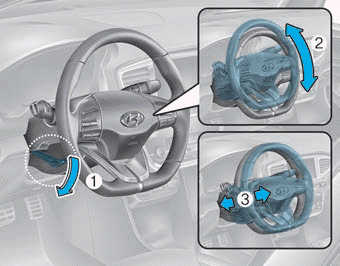Hyundai Ioniq: High Voltage Battery Control System / Pre-Charge Resistor. Repair procedures
Hyundai Ioniq (AE) 2017-2024 Service Manual / Hybrid Control System / High Voltage Battery Control System / Pre-Charge Resistor. Repair procedures
| Removal |
| 1. | Shut off the high voltage. (Refer to Hybrid Control System - "High Voltage Shut-off Procedures") |
| 2. | Remove the rear seat cushion. (Refer to Body - "Rear Seat Assembly") |
| 3. | Remove the rear door scuff trim. (Refer to Body - "Door Scuff Trim") |
| 4. | Remove the upper frame (A) after loosening the mounting bolts and nuts.
|
| 5. | Remove the high voltage battery rear cover (A) after loosening the mounting bolts and nuts.
|
| 6. | Remove the inlet cooling duct. (Refer to Hybrid Control System - "Cooling Duct") |
| 7. | Disconnect the pre-charge resistor (A).
|
| Installation |
|
| 1. | Install in the reverse order of removal.
|
| Inspection |
| 1. | Remove the pre-charge resistor. (Refer to High Voltage Battery Control System - "Pre-Charge Resistor") |
| 2. | Check for continuity between the terminals using an ohmmeter.
|
 Battery Current Sensor. Description and operation
Battery Current Sensor. Description and operation
DescriptionBattery Current Sensor is integrated into the Power Relay Assembly (PRA) and measures the current of the high voltage battery during charging or discharging...
Other information:
Hyundai Ioniq (AE) 2017-2024 Service Manual: Brake bleeding procedures
Integrated Electronic Brake (IEB) System Air Bleeding Procedures • Do not reuse the drained fluid.• Always use genuine DOT3 or DOT4 brake Fluid.Using a non-genuine DOT3 or DOT4 brake fluid can cause corrosion and decrease the life of the system...
Hyundai Ioniq (AE) 2017-2024 Service Manual: CVVT (Continuously Variable Valve Timing) System. Description and operation
DescriptionContinuous Variable Valve Timing (CVVT) system advances or retards the valve timing of the intake and exhaust valve in accordance with the ECM control signal which is calculated by the engine speed and load.By controlling CVVT, the valve over-lap or under-lap occurs, which makes better fuel economy and reduces exhaust gases (NOx, HC) and improves engine performance through reduction of pumping loss, internal EGR effect, improvement of combustion stability, improvement of volumetric efficiency, and increase of expansion work...
Categories
- Manuals Home
- 1st Generation Ioniq Owners Manual
- 1st Generation Ioniq Service Manual
- How to Disconnect Normal Charger
- Child-Protector Rear Door Locks
- Auto Door Lock/Unlock Features
- New on site
- Most important about car
Tilt Steering / Telescope Steering
Adjust the steering wheel so it points toward your chest, not toward your face. Make sure you can see the instrument cluster warning lights and gauges. After adjusting, push the steering wheel both up and down to be certain it is locked in position. Always adjust the position of the steering wheel before driving.
WARNING
NEVER adjust the steering wheel while driving. This may cause loss of vehicle control resulting in an accident.

Copyright © 2024 www.hioniqae.com







